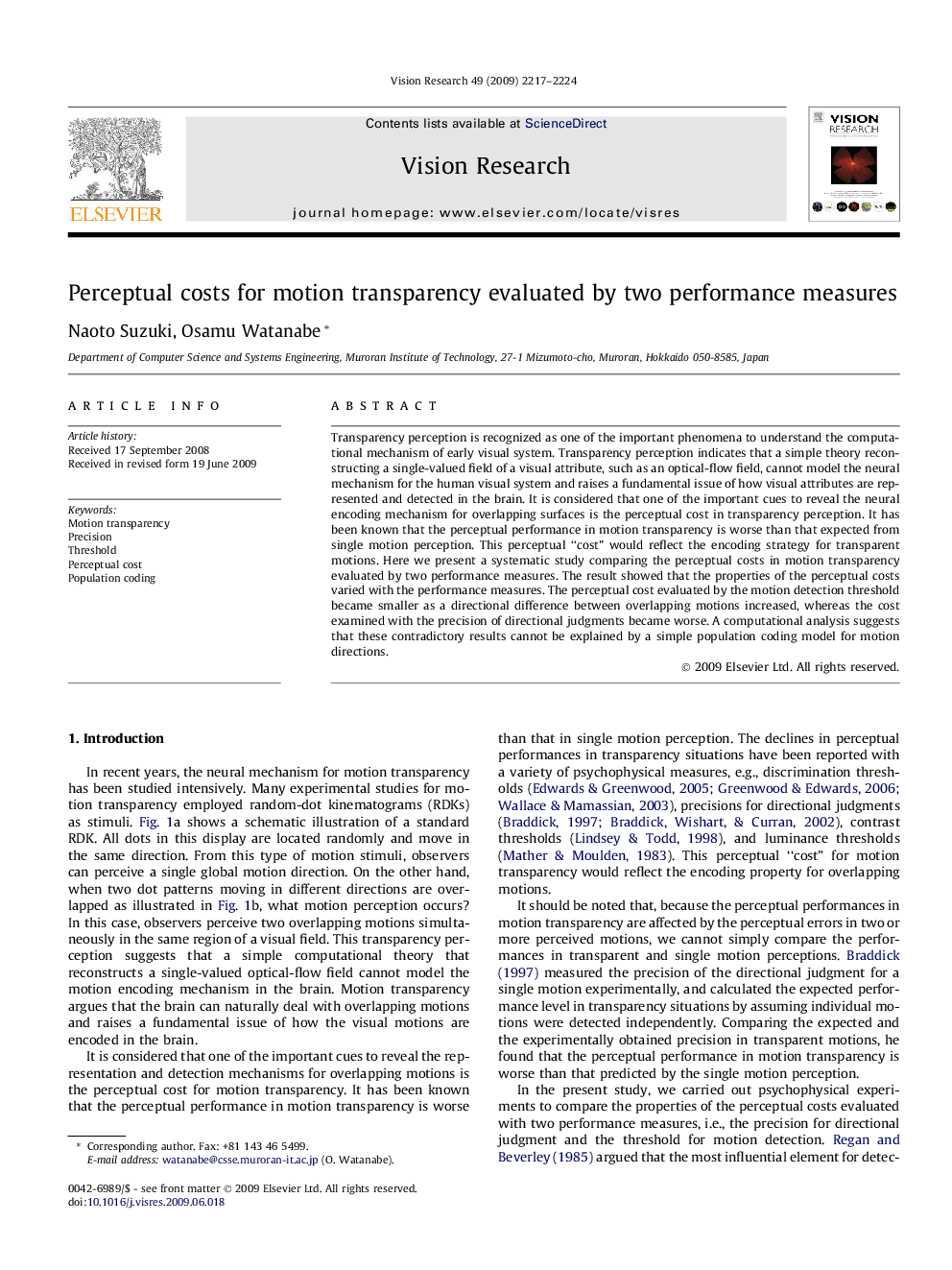| Article ID | Journal | Published Year | Pages | File Type |
|---|---|---|---|---|
| 4035121 | Vision Research | 2009 | 8 Pages |
Transparency perception is recognized as one of the important phenomena to understand the computational mechanism of early visual system. Transparency perception indicates that a simple theory reconstructing a single-valued field of a visual attribute, such as an optical-flow field, cannot model the neural mechanism for the human visual system and raises a fundamental issue of how visual attributes are represented and detected in the brain. It is considered that one of the important cues to reveal the neural encoding mechanism for overlapping surfaces is the perceptual cost in transparency perception. It has been known that the perceptual performance in motion transparency is worse than that expected from single motion perception. This perceptual “cost” would reflect the encoding strategy for transparent motions. Here we present a systematic study comparing the perceptual costs in motion transparency evaluated by two performance measures. The result showed that the properties of the perceptual costs varied with the performance measures. The perceptual cost evaluated by the motion detection threshold became smaller as a directional difference between overlapping motions increased, whereas the cost examined with the precision of directional judgments became worse. A computational analysis suggests that these contradictory results cannot be explained by a simple population coding model for motion directions.
